Lesson 5
Put Together
Warm-up: Notice and Wonder: Numberless Story Problem (10 minutes)
Narrative
This warm-up prompts students to make sense of a problem before solving it, by familiarizing themselves with a context and the mathematics that might be involved (MP1). In this warm-up, students notice and wonder about a numberless story problem to make sense of a new problem type: Put Together, Total Unknown. Students will solve the story problem in the next activity.
Launch
- Groups of 2
- Display the story problem.
- “What do you notice? What do you wonder?”
- 1 minute: quiet think time
Activity
- “Discuss your thinking with your partner.”
- 1 minute: partner discussion
- Share and record responses.
Student Facing
What do you notice?
What do you wonder?
Elena was shopping at the market with her grandfather.
Elena chose some mangoes.
Her grandfather chose some pineapples.
How many pieces of fruit did they choose?
Student Response
For access, consult one of our IM Certified Partners.
Activity Synthesis
- “In the next activity, we will find out more about the fruit that Elena and her grandfather chose at the market.”
Activity 1: Fruit at the Market (10 minutes)
Narrative
The purpose of this activity is for students to solve a Put Together, Total Unknown story problem. Students were introduced to the context in a numberless story problem in the warm-up. The purpose of the activity synthesis is to highlight that labels are helpful in understanding how written work represents a story problem (MP2).
The story problems throughout this section will often use fruit as a context. Keep a list of the types of fruit that students name in the launch and consider adjusting the contexts in future story problems to incorporate the fruits that students are familiar with.
Advances: Listening, Representing
Required Materials
Materials to Gather
Launch
- Groups of 2
- Give students access to connecting cubes or two-color counters.
- “We just read about Elena and her grandfather choosing fruit. Many families eat different kinds of fruit. What kind of fruit do you eat with your family?”
- 30 seconds: quiet think time
- 1 minute: partner discussion
- Share and record responses.
- Read and display the task statement.
- “Tell your partner what happened in the story.”
- 30 seconds: quiet think time
- 1 minute: partner discussion
- Monitor for students who accurately retell the story. Choose at least one student to share with the class.
- Reread the task statement.
- “Show your thinking using drawings, numbers, words, or objects.”
Activity
- 2 minutes: independent work time
- 2 minutes: partner discussion
- Monitor for students who include labels in their drawings.
Student Facing
Elena was shopping at the market with her grandfather.
Elena chose 4 mangoes.
Her grandfather chose 2 pineapples.
How many pieces of fruit did they choose?
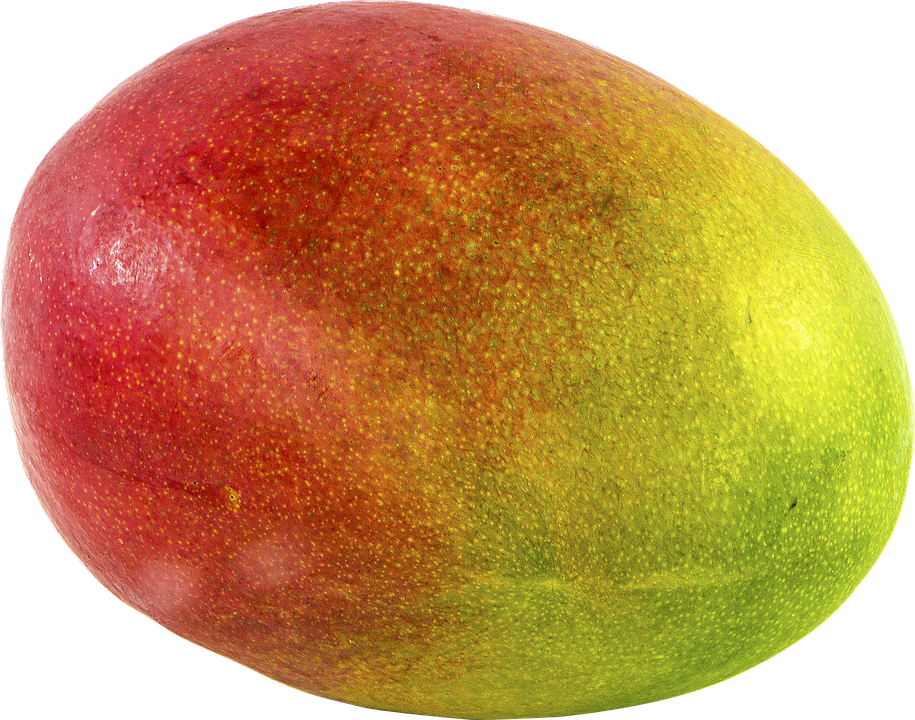
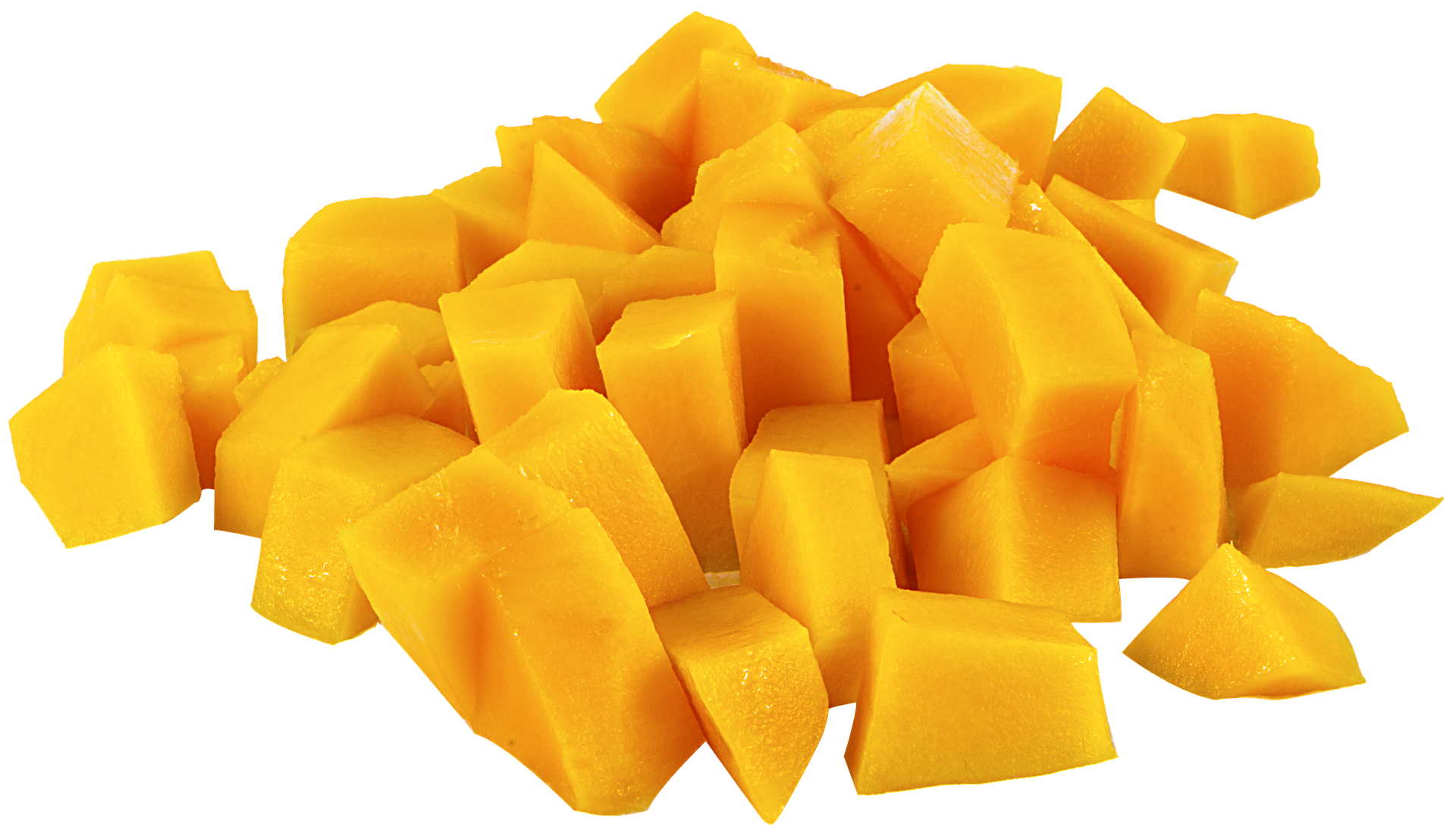
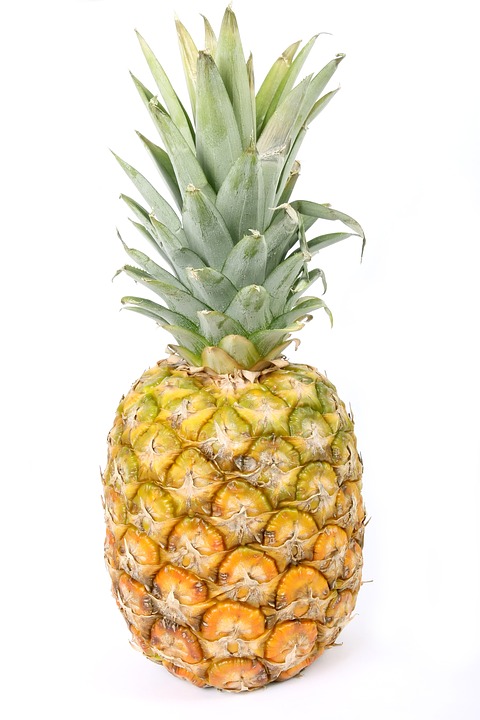
Student Response
For access, consult one of our IM Certified Partners.
Advancing Student Thinking
If students retell or represent the mangoes that Elena chose but not the pineapples that her grandfather chose, consider asking:
- “Can you use your objects/drawings to tell me what happened in the story?”
- Reread the story problem and ask “Elena chose 4 mangoes. What else happened in the story?”
Activity Synthesis
- Invite a student who created a drawing with no labels to share.
- Invite a student who created a drawing with labels to share.
- “What is the same and what is different about how they each showed the story?”
- “Where can you see the pineapples and mangoes in each drawing?”
Activity 2: A Bear with Berries (10 minutes)
Narrative
The purpose of this activity is for students to solve a Put Together, Total Unknown story problem. Students are encouraged to use clear and precise language to explain how their representation shows the story problem (MP6).
Supports accessibility for: Conceptual Processing, Organization
Required Materials
Materials to Gather
Launch
- Groups of 2
- Give students access to connecting cubes or two-color counters.
- Read and display the task statement.
- “Tell your partner what happened in the story.”
- 30 seconds: quiet think time
- 1 minute: partner discussion
- Monitor for students who accurately retell the story. Choose at least one student to share with the class.
- Reread the task statement
- “Show your thinking using drawings, numbers, words, or objects. Make sure that your partner can see how your work shows what is happening in the story.”
Activity
- 2 minutes: independent work time
- 2 minutes: partner discussion
Student Facing
A bear was searching for berries to eat in the forest.
He ate 3 blueberries.
He ate 6 raspberries.
How many berries did the bear eat?
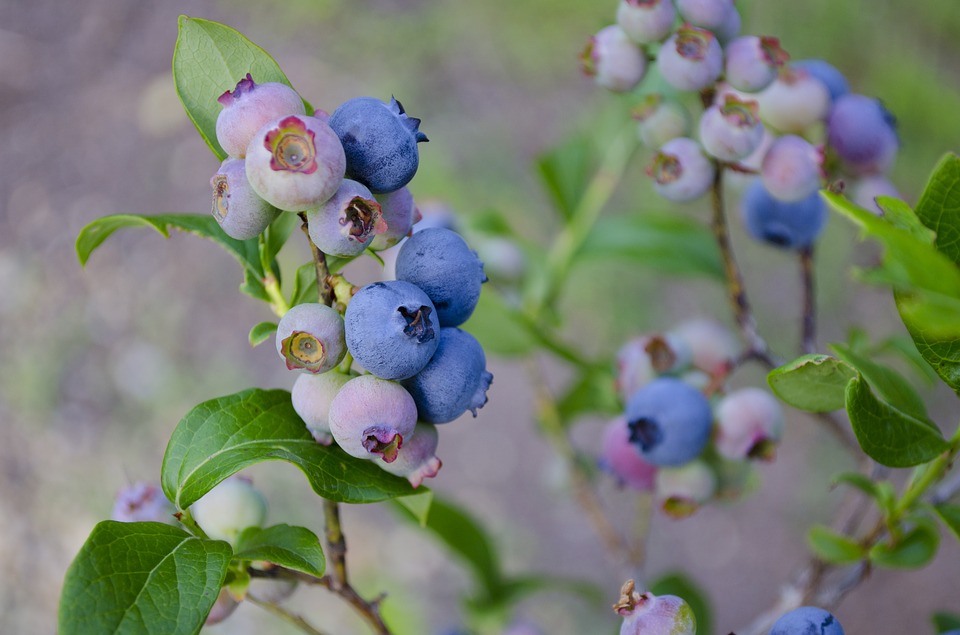
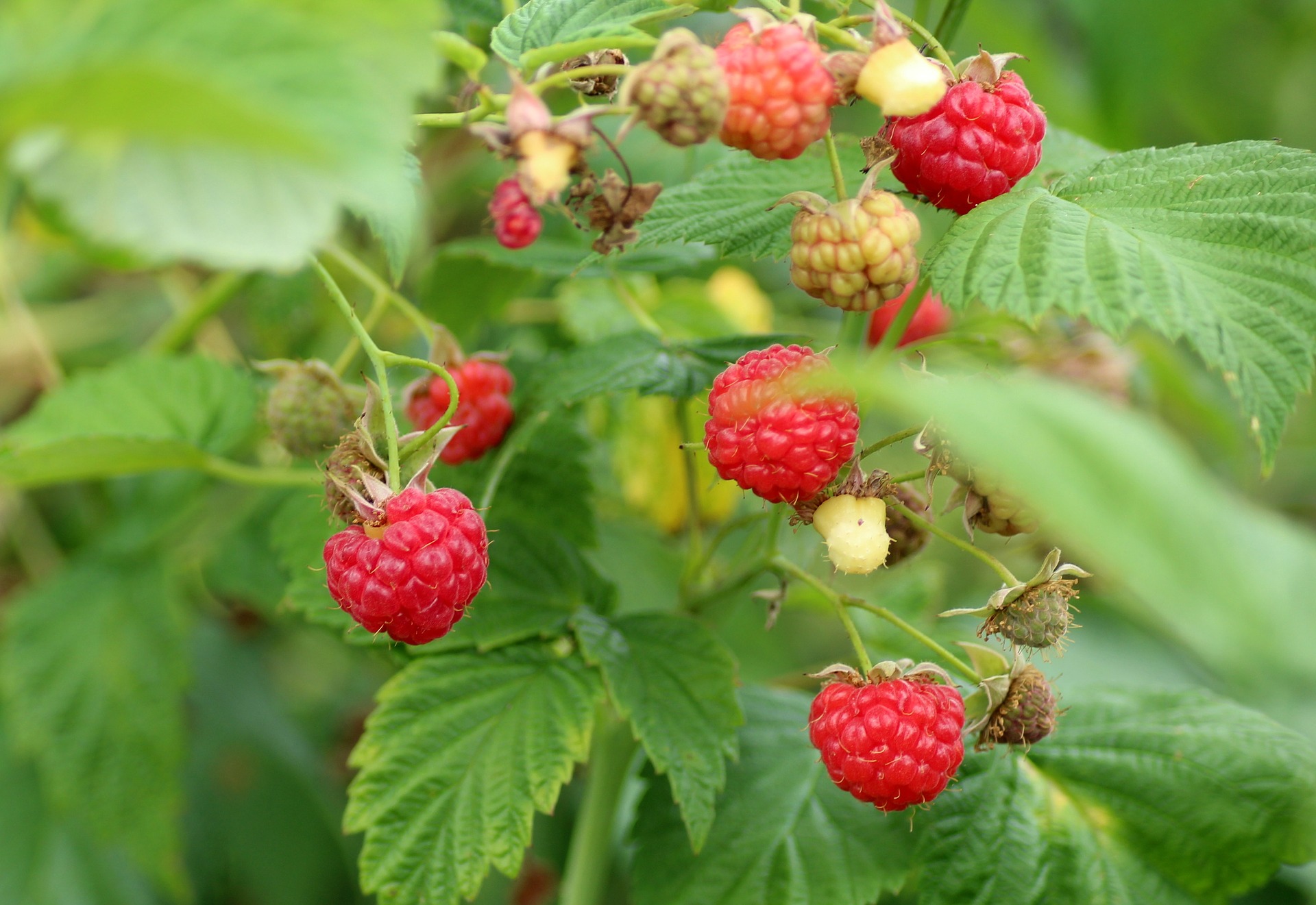
Student Response
For access, consult one of our IM Certified Partners.
Advancing Student Thinking
- “Can you use your objects/drawings to tell me what happened in the story?”
- “The bear ate 3 blueberries. Which objects/drawings show the 3 blueberries that the bear ate? Which objects/drawings show the 6 raspberries that the bear ate?”
Activity Synthesis
- “Tell your partner how your objects or drawings show what happened in the story.”
Activity 3: Introduce Make or Break Apart Numbers, Numbers to 9 (25 minutes)
Narrative
The purpose of this activity is for students to learn stage 1 of the Make or Break Apart Numbers center. Students roll to get a number from 4–9. They find two groups of dots that can be put together to make that number. Students write an expression to represent the two parts that make the number.
After they participate in the center, students choose from any stage of previously introduced centers.
- What's Behind My Back?
- 5-frames
Students will choose from these centers throughout the section. Keep materials from these centers organized to use each day.
Required Materials
Materials to Gather
Materials to Copy
- Make or Break Apart Numbers Stage 1 Number Mat 4 - 9
- Make or Break Apart Numbers Stage 1 Recording Sheet
- Make or Break Apart Numbers Stage 1 Dot Page
Required Preparation
- Gather materials from:
- What’s Behind My Back, Stage 1
- 5-frames, Stages 1 and 2
Launch
- Groups of 2
- Give each group of students two-color counters, 1 connecting cube, a number mat, and a dot page. Give each student a recording sheet.
- “We are going to learn a center called Make or Break Apart Numbers. I’m going to roll a cube onto the number mat to find which number I have to make.”
- Demonstrate rolling the connecting cube onto the number 5.
- Display the dot page.
- “We rolled the number 5. My partner and I have to find 2 groups of dots that go together to make 5. Which groups of dots go together to make 5?”
- 30 seconds: quiet think time
- 1 minute: partner discussion
- Share responses.
- “I’m going to put a counter on this group of 3 dots and a counter on this group of 2 dots. 3 dots and 2 dots is 5 dots. What expression should I write on my recording sheet?” (\(3 + 2\))
- 30 seconds: quiet think time
- Share responses.
- Demonstrate writing \(3 +2\).
- “Now that my partner and I have written our expression, we can look to see if there are 2 more groups of dots that go together to make 5 dots. If we can’t find any more ways to make 5, then we roll and make another number.”
- “Work with your partner to find 2 groups of dots to make a number and write an expression.”
Activity
- 10 minutes: partner work time
- “Now you can choose another center. You can also continue playing Make or Break Apart Numbers.”
- Display the center choices in the student book.
- Invite students to work at the center of their choice.
- 10 minutes: center work time
- If time, invite students to choose another center.
Student Facing

Choose a center.
What’s Behind My Back?
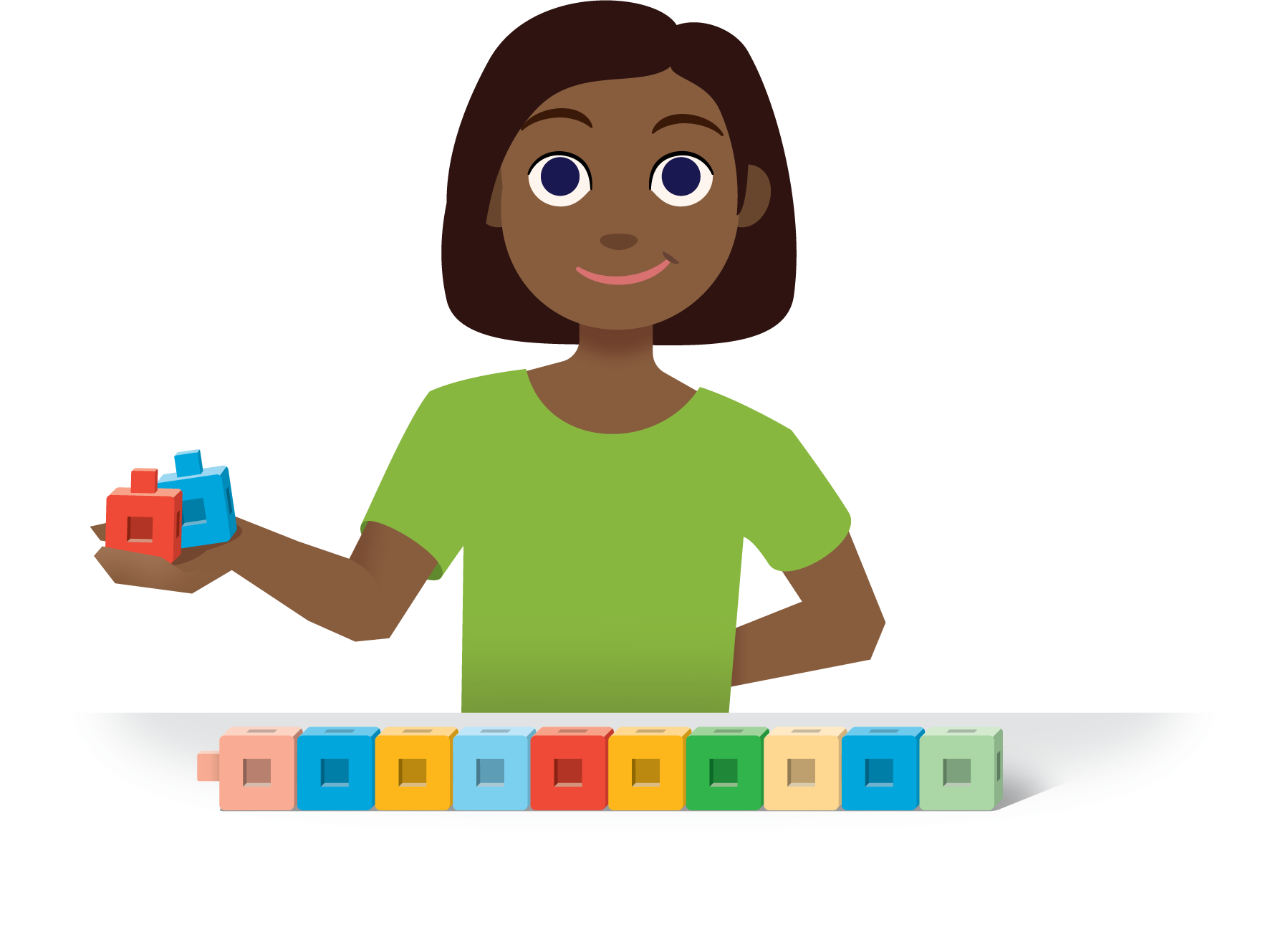
5-frames

Make or Break Apart Numbers
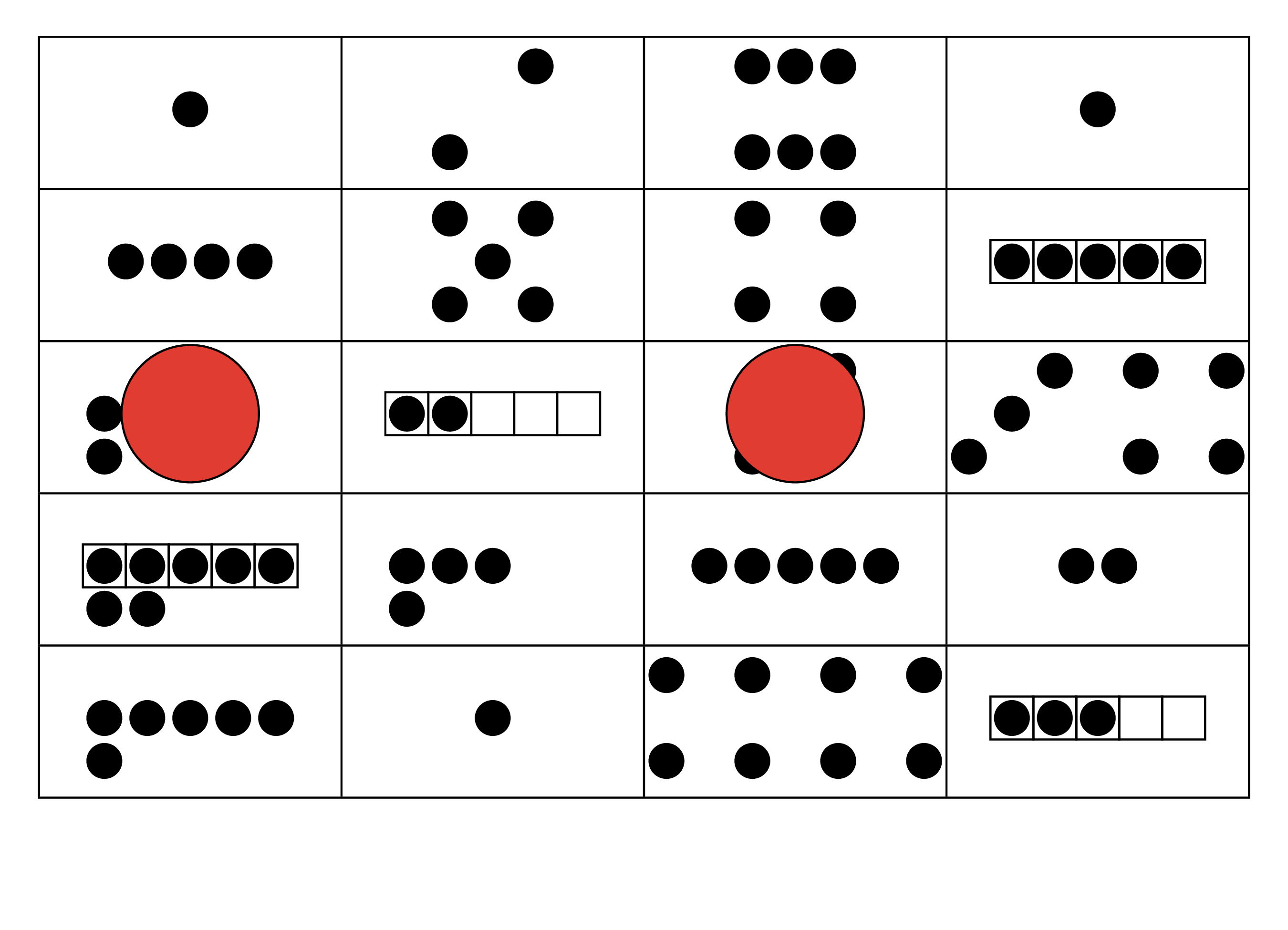
Activity Synthesis
- Display a dot page with a counter on 3 dots and 3 dots.
- “Diego and Tyler covered these 2 groups of dots to make 6. Are there 2 other groups of dots that Diego and Tyler can cover to make 6?” (4 and 2, 5 and 1)
Lesson Synthesis
Lesson Synthesis
“Today we read and solved story problems.”
Reread the story problem:
A bear was searching for berries to eat in the forest.
He ate 3 blueberries.
He ate 6 raspberries.
How many berries did the bear eat?
“What can you add to or change about your work to show what is happening in the story?”
Invite students to improve or change their representations.
Cool-down: Unit 5, Section B Checkpoint (0 minutes)
Cool-Down
For access, consult one of our IM Certified Partners.